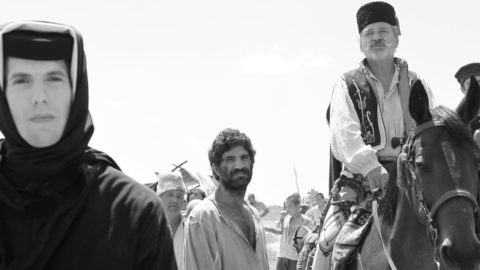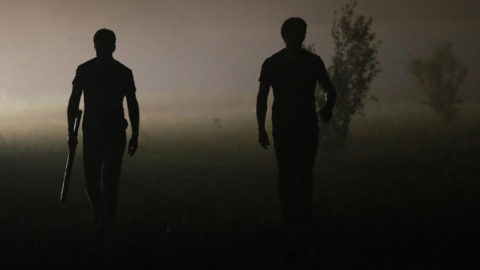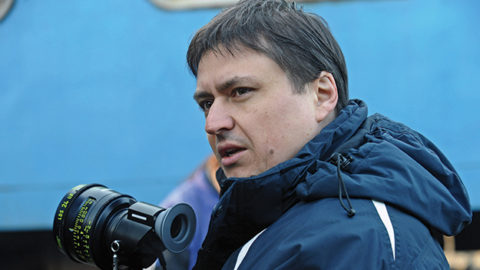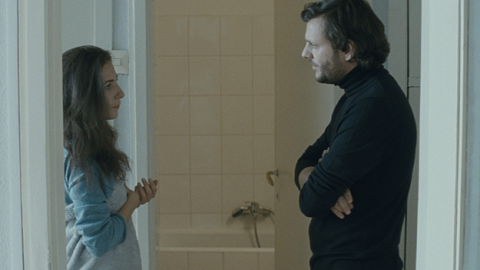Interview: Radu Jude
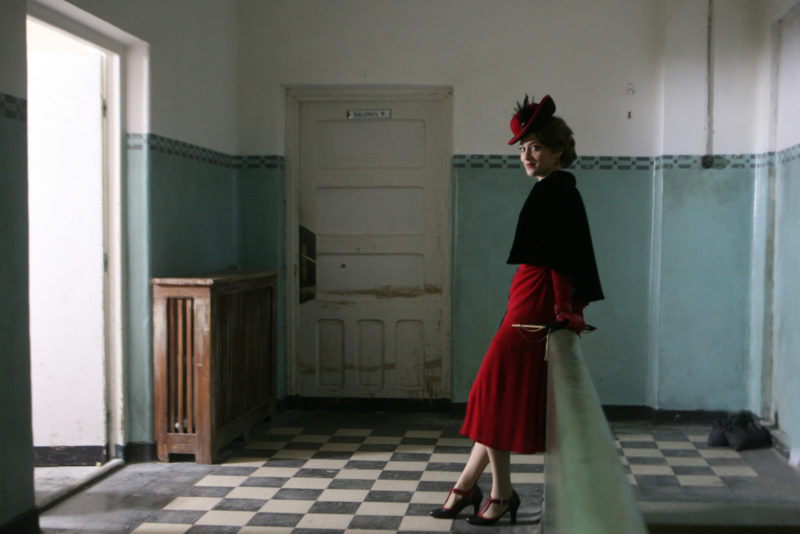
The Romanian New Wave shows no signs of waning, with steady input from such directors as Corneliu Porumboiu, Cristi Puiu, and Cristian Mungiu. Porumboiu’s films, including 12:08 of Bucharest (2006) and his latest documentary, Infinite Football, deal slyly and playfully with the legacy of communism, while Mungiu’s Beyond the Hills (2012) and Graduation (2016) as well as Puiu’s The Death of Mr. Lazarescu (2005) and Sieranevada (2016) are tense chamber dramas, marked with morbid humor. A touch of angst lingers in all of these works, with frequent allusions or direct examination of the recent past.
In this cinematic landscape, Bucharest-born Radu Jude is a bit of an anomaly. Jude first gained significant recognition on the international festival circuit when he won the Best Director prize at the 2015 Berlin International Film Festival for Aferim!. With its gallows humor, the film earned Jude comparisons to Robert Altman as well as to American Westerns. Meanwhile, its stunning black-and-white photography and labyrinthine landscapes could be as easily compared to Wojciech Has’s enduring cult classic The Saragossa Manuscript (1965). The latter comparison particularly points to the fact that Jude has a unique aptitude for fashioning tales that hover in the indefinite space between distant historical fact and fantasy. In Aferim! the historical setting is 1835 Walachia, later Romania, in which two lawmen hunt a fugitive Roma, wanted by a powerful landowner for allegedly having sexual dealings with his wife. This motivation sets off a long journey through vast, parched terrain, in which strangers—often of the lowliest character—exchange brief pleasantries. Bizarre, funny, and mocking toward the characters’ vicious prejudice—against Jews, Roma, all “others”—Jude’s historical purging of the Romanian past also comes across as a much broader, universal nightmare of history, which his protagonists have been condemned to wander, for eternity. The phantasmagoric journey ends with a brutal return to the urgent business of the runaway, and the violent finale, in which repentance, an appeal to human dignity, and finally, pity, come all too late.
By comparison, Jude’s Scarred Hearts (2016) is a much gentler effort, partly informed by Jude’s inspiration, the autobiographical novel by Romanian writer Max Blecher. On the surface, the story deals with a universal theme of a promising young talent cut short by an incurable illness. And yet, in Jude’s dark fashion, the illness seems not so much unpreventable as, well, made much worse by early 20th-century medicine. At the film’s start, a young writer, Emanuel (Lucian Teodor Rus), arrives at a sanatorium with lung trouble. He soon develops an abscess, which is then improperly treated, and leads to further complications. The grim surgery scene sets the tone for the darker, at times nearly surrealist parts of the film, in which we see Emanuel sink deeper and deeper into despair, signaled by the movie’s muted sepia color scheme. Contrasting with this darkness is the light-filled pastel palette of the sanatorium’s outdoors: the vibrant cyan tones of the sea and skies, complemented by the presence of beautiful women, among them a recovered patient who holds out to Emanuel a vague promise of recovery. Emanuel’s humor and joie de vivre buoy him along, even as his suffering deepens, and his intellect and wit make farce out of his dire fate. More importantly, Jude situates this scenario against the background of rising fascism in 1930s Romania, which led to the country eventually aligning itself with Hitler. Jude thus makes a striking point that Emanuel isn’t the only one deluding himself about his condition—be it physical, mental, or existential. In a sense, the entire nation is sinking into an equally dark, deadly, oblivion.
The intertwining of personal and political deepens as Jude’s work increasingly takes on more complex forms. His essay film The Dead Nation (2017) shows his preoccupation with verisimilitude and with photography as a contextual record, while treating the theme of anti-Semitism by reaching for a literary reference—the Romanian writer and physician, Emil Dorian. Meanwhile, his latest fiction feature, I Do Not Care If We Go Down in History as Barbarians, which took top prize at this year’s Karlovy Vary Film Festival, is a intricate fiction-nonfiction hybrid—a meditation on how dramatic arts, including cinema and theater, can not only bring to life but also flatten and dilute our sense of historical events and historical truth, and how memory and any nation’s sense of its own past are constantly being negotiated.
Film Comment spoke with Radu Jude via Skype in advance of the theatrical run of Scarred Hearts, which opens July 27 at Anthology Film Archives.
The sanatorium is such a powerful motif in European 20th-century writing. In Thomas Mann’s The Magic Mountain, for example, a young man falls in love at a sanatorium and is cured, only to then go off to war. All these tropes—youth, death, melancholy, romantic love, war, and politics—also feature in Blecher. Did you know his novel for some time before adapting it?
I suppose that the comparison with Thomas Mann is unavoidable. Blecher was indeed frequently compared to Mann, either to show Mann’s influence on Blecher, or to demonstrate that Blecher’s novel does not reach the same artistic heights as The Magic Mountain. Which is true. Blecher’s novel is perhaps not as complex as Mann’s, but it has something else: the details of a lived experience, since Blecher was sick and wrote mostly about what he truly suffered as a young man.
I read the novel when I was a teenager and it impressed me a lot. When I was about 20 years old I even tried to write a screenplay based on it, but I quickly abandoned the project. It wasn’t until 15 years later that a good friend of mine suggested the idea of making a film based on the book. At that point, I read it again. And although I liked it less on a second reading, I became increasingly interested in making the film, in order to explore the key themes in the novel—sickness, death, love, sanatorium, and existentialism—and also to show certain elements of the Romanian society in the 1930s.
Scarred Hearts, is a “loose adaptation,” as mentioned in the credits. Which parts of Blecher’s writing did you preserve, and which of your own elements did you add?
There are some changes that deal with mixing episodes from the book with episodes from Blecher’s real life. There are also characters that differ from the book, etc. But the big change I made—and for which I was later accused by almost all the Romanians who saw the film, especially by the intellectuals who knew Blecher’s works—was adding the political context, particularly the rise of anti-Semitism and of right-wing ideologies. These elements didn’t exist in Blecher’s books.
Why did I put these elements in the film? Why did I “ideologize” it, thus “forcing” this particular issue? Such were the complaints leveled at my film. I could offer a lot of answers for including the political context. A particularly clear one can be found in the most complex text written on the film to date, by Veronica Lazăr and Andrei Gorzo, and available online in English. I’ll take the liberty to quote from it: “The film unavoidably looks at Blecher’s life and work from the vantage point of a later era. From this vantage point, ignoring the political context—anti-Semitic history gathering momentum towards the end of Blecher’s life and after his death, which happened in 1938—can appear not as an objective or neutral rendering of the past, but as a guilty truncation of it. Pointing out that the anti-Semitic context can’t be overlooked may have been one of the reasons for this film’s very existence.”
As for me, I prefer to offer a more symbolic answer: in the last scene, I filmed Blecher’s grave, in the Jewish cemetery, in a small Romanian town, Roman. Behind his grave, if you walk further one minute, you find a mass grave for hundreds of Jews, some of the many thousands killed in the “death trains” from Iași, transported on June 29, 1941. So this is why I put that in my film.
As a side note, Scarred Hearts is also full of Romanian music of that time, which is not mentioned in Blecher’s books. And yet, nobody seemed to be offended by my adding that music. In this purist sense, one can see that [my detractors’] complaints are not as innocent as they claim.
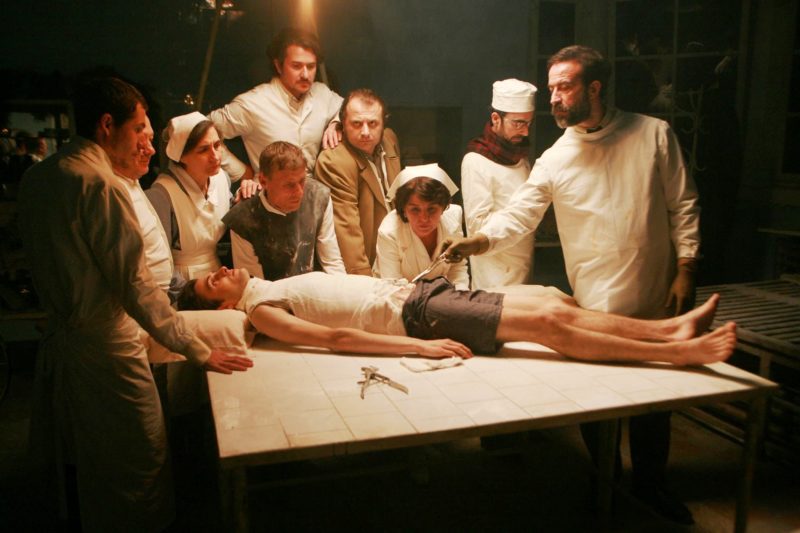
I loved your decision to insert title cards with brief texts throughout. It distances us from the story but also gives it a soulful flavor, even when the scenes are slightly comic. Was it to keep some of the original language from the text?
All of these reasons and more. I wanted a distance. I wanted to also pay homage to Blecher’s literature. And it is a type of editing device: you juxtapose a text with an image and something more complex may result from this combination.
Your previous feature, Aferim!, was shot in crisp black and white, whereas Scarred Hearts has a very rich color palette. What informed your discussions with your cinematographer and production designer to achieve the film’s look?
Cristian Niculescu, the production designer, did a lot of research in order to get a realistic reconstruction of the 1930s right. In addition, Marius Panduru, the director of photography, and myself decided to make the photography look more artificial, to match the entire film, in a way. As for the texture of the film and the soft, warm look, I think it comes from the fact that we shot on 35mm with vintage Super Baltar lenses from Bausch & Lomb. We were lucky to find the lenses available in Romania, through a friend of our producer Ada Solomon’s.
In a Q&A at the Karlovy Vary Film Festival, where you were presenting your latest film, you mentioned Straub-Huillet and German writer W.G. Sebald as your influences. How have they informed your work?
There are many more influences, of course. I love Straub and Huillet’s films primarily for the way they transform a text into a film, for their lack of commercial devices, and for their courage to be unpopular. In an art world dominated by the desire to be successful no matter what, it is inspiring to see someone like Straub or Huillet who doesn’t care about success.
As for Sebald, I think it has to do with his way of putting together the past and the present in his novels, and his ability to be political in a way that makes things more complex, rather than simpler.
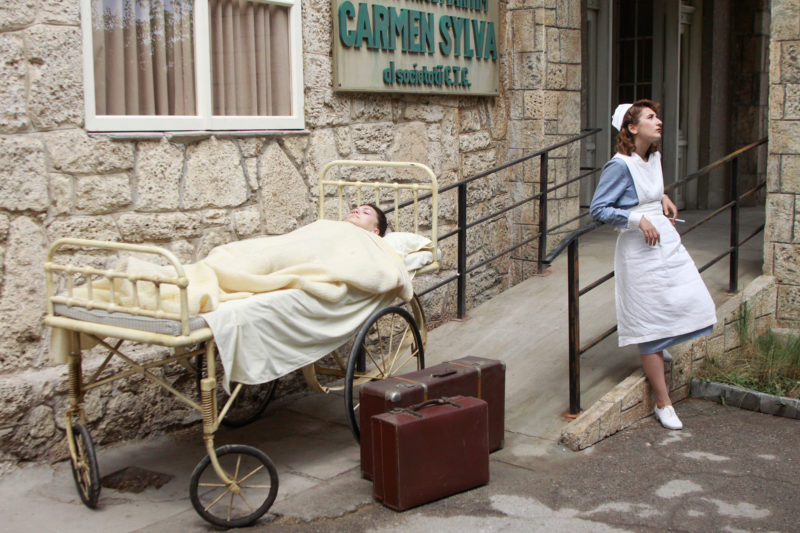
It seems to be a very potent moment for tackling the history of right-wing movements. Did that figure into your own motivation to reach for this material?
It is true that nowadays we’re seeing a return of nationalism, racism, and hatred for minorities. We see it everywhere, from the United States to Israel, from Poland to Romania, and beyond, which makes Scarred Hearts seem contemporary, as well as historical. But my own interest in the fascist Romania and Europe started when I was much younger and has to do with the fact that all this was hidden from our generation, and from the generations that came before us. Romania’s communist dictatorship was also nationalistic, so only the heroic episodes of our history were allowed to be discussed.
After the 1989 Revolution, things became more mixed: on one hand, the ideologies of the 1930s and 1940s became popular again. I mean by this not only nationalism but also racism—mostly directed toward the Roma population—;admiration for the “Hitler’s forgotten ally,” Marshal [Ion] Antonescu; and the return of the Church not only in the private lives of people but also in politics. The Church has always supported the most conservative directions in politics and does it more and more so. But, on the other hand, there is also a democratic, progressive part in the Romanian society, and our historians can write freely about our dark, hidden past. And although the nationalistic view of history is still the mainstream, there is also the possibility of discussing the past on other grounds, including the fascist past. There are more and more historians who do it, and not only historians but also writers, political scientists, artists, and theater directors.
Ela Bittencourt works as a critic and programmer in the U.S. and Brazil and is a member of the selection committee for It’s All True International Documentary Film Festival.



